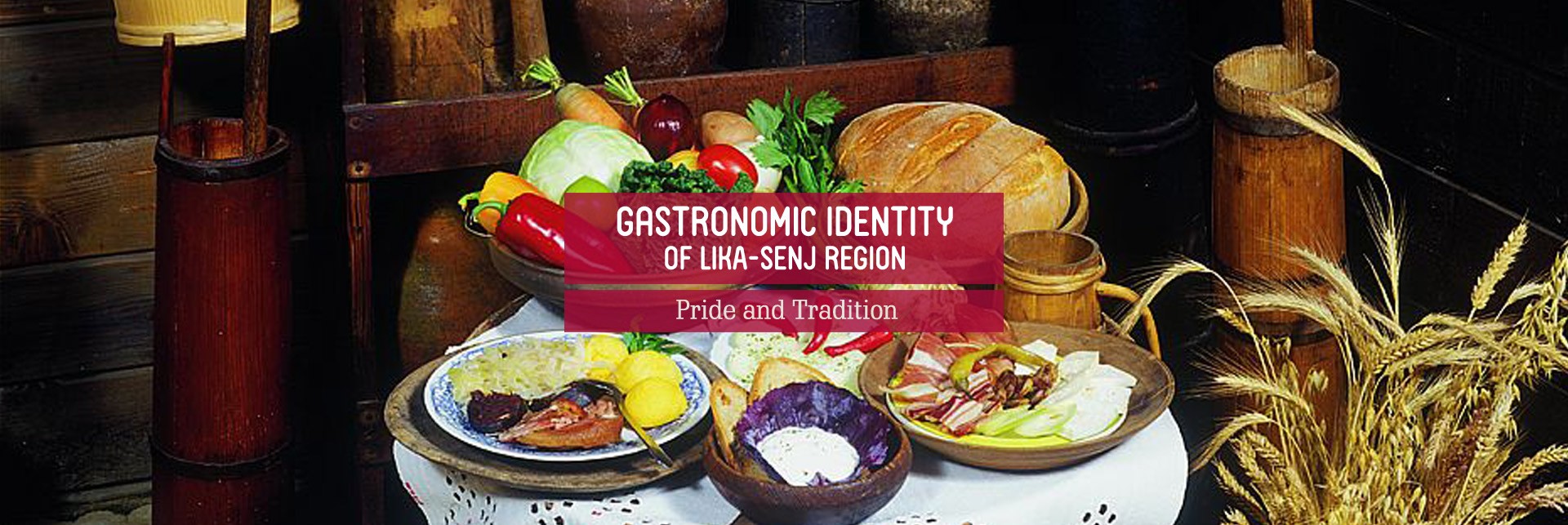
A Taste of Mountains and Sea
Rare are the regions that imprison all the senses and fill one with peace and strength, as does the region of Ličko-senjska County.
The scent of sea, rock, sage, olive and bura (north wind on the coast) on one side and the scent of grass, hay, forests, fresh summers and sharp winters on the other.
The delicious smells of fish, salt, olive oil, rosemary and sage, Pag lamb and prosciutto ham dried in the bura wind and cheese on one side, and on the other the taste of fresh milk, basa cheese and škripavac, spit-roasted lamb or baked under the lid with golden baked potatoes, cabbage and meat, trout from Gacka, maize flour and plums, mushrooms and drinking water from the vrila (springs).
The proud and sublime Velebit range stands in between connecting all these aromas and tastes, diluting and condensing them, lowering them by air currents down the trails and roads to the delight and benefit of its inhabitants, guests and chance travellers.
Part of this Mediterranean and continental mosaic that is becoming more and more sought for on the market is at the disposal of visitors through its rich gastronomic offer.
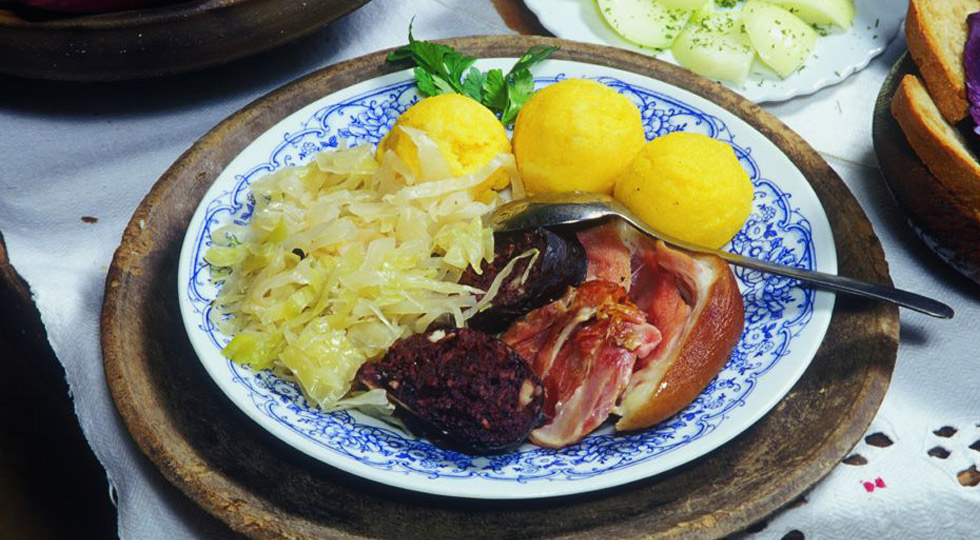

Ličko-senjska County - unique in its variety
The major part of the Ličko-senjska County is made up of natural basins with numerous fields crossed by rivers and precipices of the Velebit mountain range in the continental part and by part of the island of Pag in the coastal region. The highlight of the many natural beauties is one of the highest and loveliest mountain ranges is in fact the mountain Velebit, covered with endemic species, protecting the Adriatic from the cold and inducing its Mediterranean climate.
Mosaic scenery as well as the different natural and historical attractions are a result of Mediterranean influence on one side and continental Europe on the other. Many places in the county contain archeological sites and historical monuments that are evidence of early settlements and life in this region.
Considering its unity and differences Ličko-senjska County can be divided into four regions:
Lika
- the western part covers the continental area of the county that distinctively belongs to mountainous Croatia.
Central Lika is distinguished by numerous caves containing a fourth of the whole number of caves that are protected geomorphological monuments of nature in Croatia.
In the picturesque village of Smiljan, about 7 km from Gospić, stands the native home of Nikola Tesla, and at 4 km distance from it is located the village of Veliki Žitnik, birthplace of dr. Ante Starčević.
A Turkish 16th century tower stands out in the village of Perušić.
The city of Gospić is the center of Lika, and at the same time the economic and administrative center of the county.
Gacka
- one of the oldest Croatian regions with roots going back to the period of the Japodes (an Illyrian tribe) is characterized by a tumultuous past that is confirmed by remnants from Roman times and Turkish rule. It is an ideal region within reach of the sea, unforgettable for the intensity of experience and nature, showroom of the best works of art that nature has created by playing with water and rock four thousand years ago. A natural phenomenon is surely the Gacka river that with its renewal in recent times preserving the particularities of former way of life, such as wheat grinding in mills standing by the river and rolling (washing) cloth.
Podgorje or Velebit - maritime region
mountain and sea meeting stretch, relates to the Velebit maritime slopes between Senj and Zrmanja along with the cities of Senj and Karlobag.
Pag Island - city of Novalja
with numerous evidence of life form from ancient times, is situated in the northern part of the island that consists of the localities Stara Novalja, Lun, Caska, Metajna with sheltered coves in the inner and outer region of Novalja. The lovely sandy beaches called Trinćel, Zrće and Straško surround the variety mosaic of Ličko-senjska County.
Ingredients
MEAT AND SMOKED AND CURED MEATS
Lamb and pork are the traditional meat of this region. They are prepared mainly spit-roasted or under the baking lid with potatoes. Then there is lamb soup with smoked meat, smoked wether (sheep) shoulder in sauerkraut or sour turnip and cabbage with smoked ribs and sausages. During the winter season potatoes, sauerkraut, beans, turnip and kohlrabi are prepared with meat. Sour vegetables are eaten as salad accompanied by spiced polenta (maize porridge). During the hunting season wild boar or bear steaks are available or wild boar and deer ham. Trout or other sweetwater fish and frogs are fished from rivers, brooks and lakes.
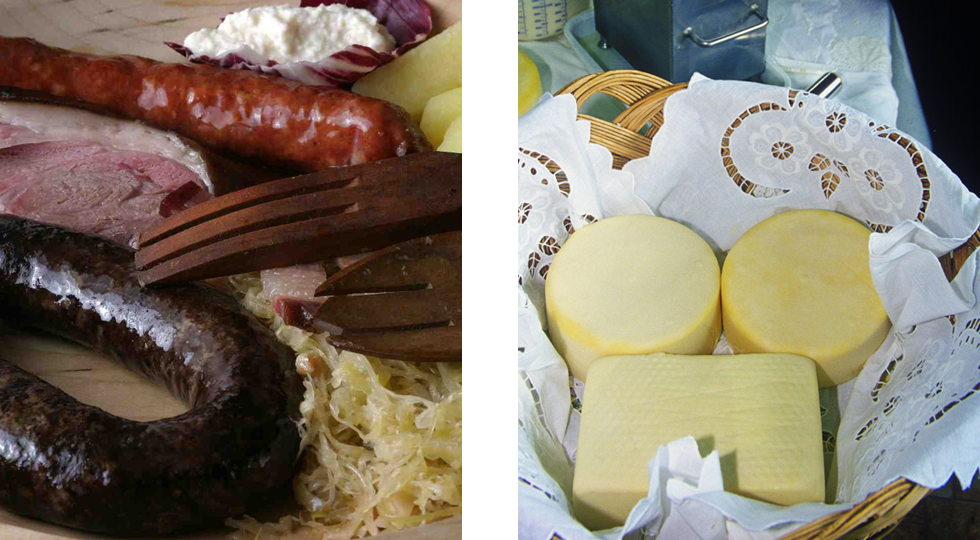
MILK AND MILK PRODUCTS
This cattle-raising region is rich with milk prepared in various ways: sour and sweet. Kiselina (sour milk), cheese, butter, basa (soft cheese made from skin milk) and cream were regular products. Animal rennet was used for the production of cheese and butter was made in special pots - churns.
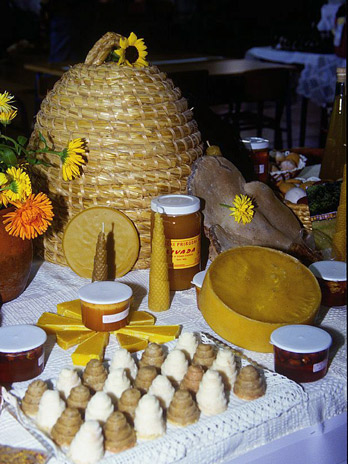
HONEY
Contains many various types of sugar and it is a very important source of energy. Its other ingredients are vital for the health: the healing power of propolis has been known for decades. The taste and scent of honey depends on the position of the beehives (woods, plains, mountains, seacoast) and the flower from which honey is taken (lime, locust, chestnut, lavender, sage…). Honey is sold in liquid state, in glass jars but it can also be sold with pieces of honeycomb. Honey is kept in a dry but not very warm place that must neither be too hot or too cold. Honey must never be put in hot tea for it then loses some of its useful ingredients.
VEGETABLES
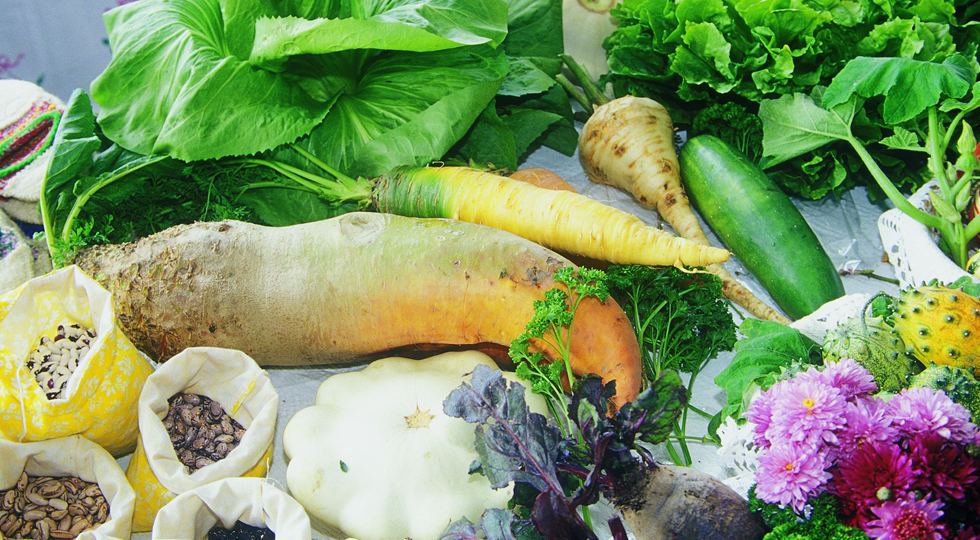
CABBAGE
One of the oldest cultured plants. It can be eaten fresh or with many specialties - sauerkraut. Fresh cabbage is mainly used for salads. The Slavic tribes discovered the present day process of souring. Sauerkraut was for a very long time one of the rare winter sources of Vitamin C. A glass of brine (sauerkraut juice) can be used in the morning to clear a hangover. It is combined with other vegetables especially during the winter as it accompanies meat and smoked meat.
POTATOES
The potato has for centuries been the most represented alimentary. The early red potato contains less starch and is suitable for baking, salads and casseroles. The yellow and white potato contains more starch and it is suitable for mashed potatoes and homemade noodles. It is better to cook it unpeeled in order to preserve its nutrients. Potato salad should be seasoned while the potatoes are warm and then left to stay for an hour before being served. Warm milk should be added to the mashed potatoes because cold milk makes it cloddy and tough.
Well-known dishes: potatoes with bacon, potatoes with all types of sauces, roasted potatoes and pole (potato halves baked with their skin).
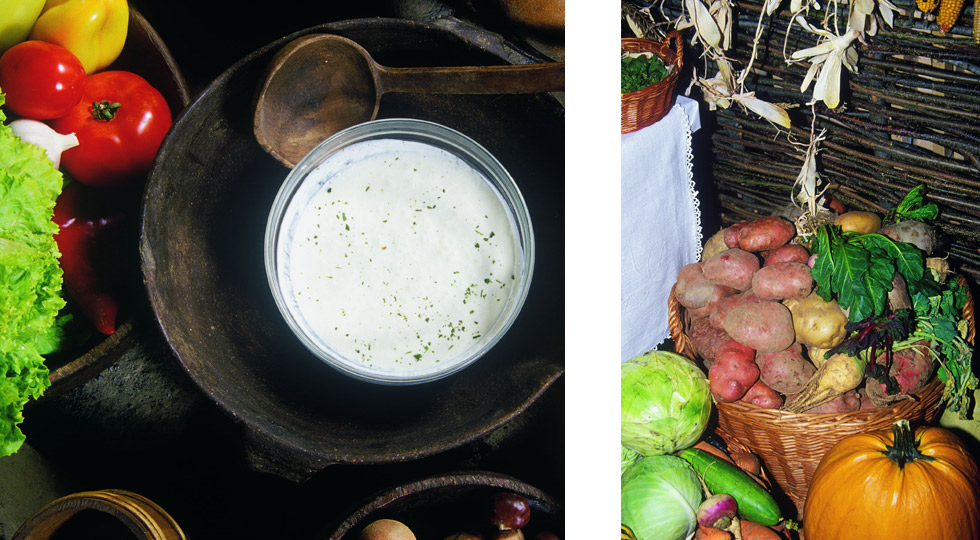
ONION
There are many subspecies of onion of various shapes, sizes, tastea and culinary use. It can be eaten fresh, cooked and baked. Finely chopped fried onion gives density to stews and sauces. When preparing paprikaš (stew) the onion should be grated. Spring onion is the best-suited vegetable for spit-roasted lamb.
GARLIC
Is a spice and medical plant that originates from Asia. Garlic bulbs are basic seasoning for many types of food. Grilled fish, brudet (fish stew) and buzara are unimaginable without garlic. Due to its proved antibiotic components in the southern parts of the region it is spread on bread dipped in olive oil to prevent the flu. It is also used to lower blood pressure.
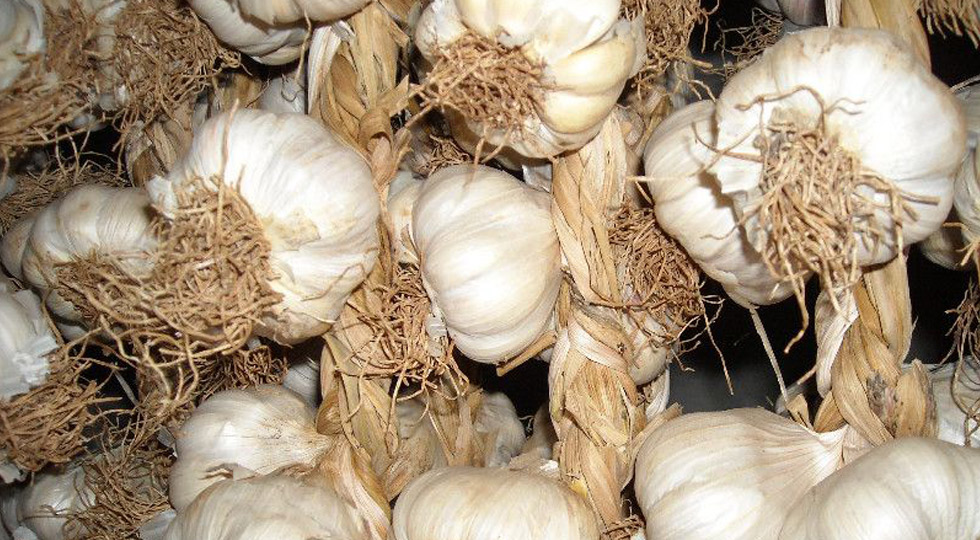
HEALING HERBS
CORNELIAN CHERRY is a plant that grows to a height of 8 meters. It has a thick crown, yellow flowers that bloom in February and March. It grows mostly along the dry southern parts of the sunny and rocky hardwoods along with other shrubs and brushwood. It is also grown in gardens and parks and because of its beautiful flowers and eatable fruit it is useful to plant it near apiaries. Tea from its ripe fruit is used to help solve indigestion. It can also be used to make excellent juice and jam.
BASIL is an annual plant with a widely spread stalk of specific scent and aroma. It grows up to 30-40 cm height. It is a well-known and appreciated plant used as medical herb and spice. It comes from India. According to some old written records monks brought it to central Europe in the 12th century. Basil is grown in gardens and flowerpots. The whole plant and seeds are used for medical purposes. Tiny fresh or dry leaves of the plant are sprinkled over some dishes.
IMMORTELLE is an evergreen, and grey-coloured plant that grows up to 10-40 cm. It has some yellow flowers at the top. It grows on sand and blooms in the summer. It is a popular flower traditionally grown in gardens. It has been used since ancient times as medicine for healing the gall bladder (helps to eliminate stones).
WORMWOOD is a very bitter plant and for this reason it is not cooked but prepared with only hot water poured over it. It grows on sunny lawns as a wild plant. Due to its curative value it is grown in gardens. A small quantity soothes the stomach and brings back the appetite. It is added to brandy as a medicinal herb. It is not good to make use of it very often or in large quantities because its ethereal oils contain thuja, which is a strong poison and provokes headaches and dizziness.
HEATHER is an evergreen demi shrub that grows up to 20-40 cm. Its roots are strong. It has many small branches with blue and white flowers at the top. The whole plant is fluffy and full of glands filled with ethereal oils that make it very aromatic. It grows in dry, rocky and warm karst land of karst regions, especially in the coastlands. Heather is successfully used against intestinal parasites as well as liver and gall bladder diseases, cough, inflated conditions and cramps.
LIME is a big tree with a thick crown. The tree reaches a height of 25-30 m and lasts for a couple of centuries. Its flowers are of very pleasant and gentle scent. Its fruit is similar to small nuts. It grows all over Europe’s mountain forests. Its flowers should be picked as soon as the tree blooms for then they have the largest amount of vitamin C. Very young and open leaves can be used as a vegetable. Dried flowers are boiled for tea and used to cure colds and breathing problems.
LAUREL was an appreciated and holy plant in ancient times. The laurel wreath was a symbol of fame and honour in Roman times. This shrub grows on the Mediterranean and its tough leaves can be seen all year round even though its dried leaves have more aroma. The leaves and fruit of this plant are used as spice plant and to make oil. They are added to sauces and marinades, venison meals, fish and poultry. Laurel is used to conserve dry fruit and dry fish. It is also added to vegetables placed in vinegar.
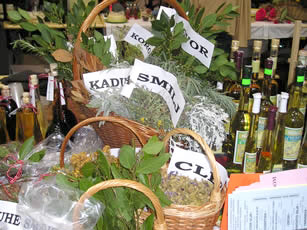
SAGE is a potherb and a medicinal herb that the old Romans considered a “holy plant”. It is of bitter and acrid flavor. Its fresh and dry leaves are used as a supplement to meat and fish dishes, especially in marinades, venison and rice dishes. Tea and wine are often made from sage and it is useful for the kidneys, liver and problems with tooth gums.
SAGE WINE, gotten from a pinch of sage that boils in a cup of good red wine, gives strength to convalescents. During the influenza season breathe in the steam coming out of a boiling pot containing sage, thyme, lavender and rosemary. After the inhaling is over make use of the liquid as an admixture for your steam bath.
KOMORAČ se može kuhati u mlijeku ili se može od njega pripremiti čaj. Često ga zbog arome stavljaju u rakiju. Jedna čašica rakije s komoračem liječi probavne smetnje. Sjeme stavljeno u rakiju lijek je koji jača želudac i čisti organizam. Sjeme komorača odstajalo u maslinovu ulju pomaže kod reume i čireva, a prokuhano u vinu liječi bubrege.
OLIVE - OLIVE OIL
Most healing properties can be found in virgin oil gotten from cold pressing. The oil is used for massages when suffering from rheumatism, gout and arthritis. Heated oil soothes pain caused by boils and hemorrhoids. Olive oil and lemon juice form a potion that speeds up the secretion of gall-bladder stones.
Olive oil is unavoidable in gastronomy and it is used as a constant dressing in the coastal part of the region. Growing olives is becoming more popular by the year and its produce is daily present on tables as dressing to fish dishes as well as boiled and fresh vegetables.
ROSEMARY contains ethereal oil that is used for refreshing steam baths and is specially recommended to people who suffer from rheumatism. It can be found on the sunny and rocky parts of the coastal regions. It grows as decorative plant in gardens, parks and in flowerpots. Rosemary tea helps digestion and general weakness. It is kept in brandy by putting rosemary twigs in a bottle that was placed under the sun for 10 days. Rosemary oil is obtained by putting rosemary into a bottle with olive oil that is also kept under the sun for 10 days.



